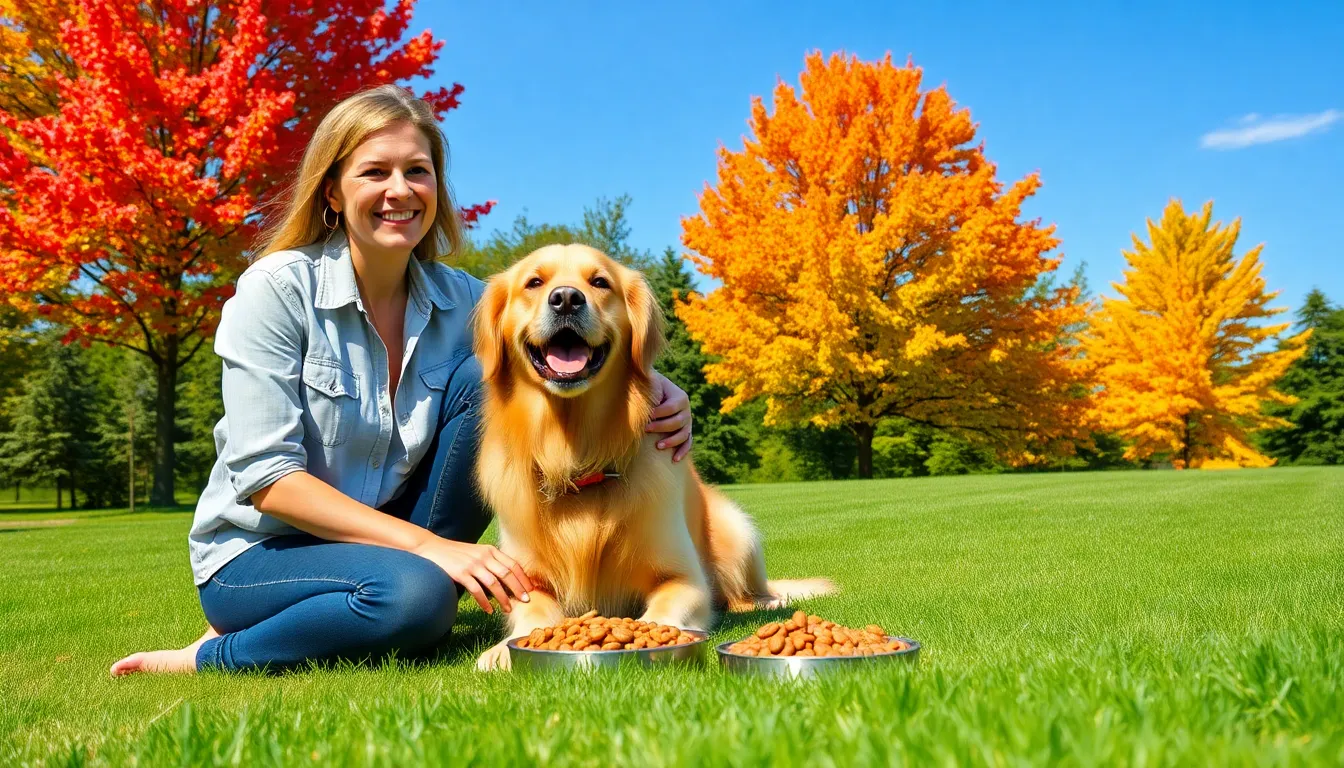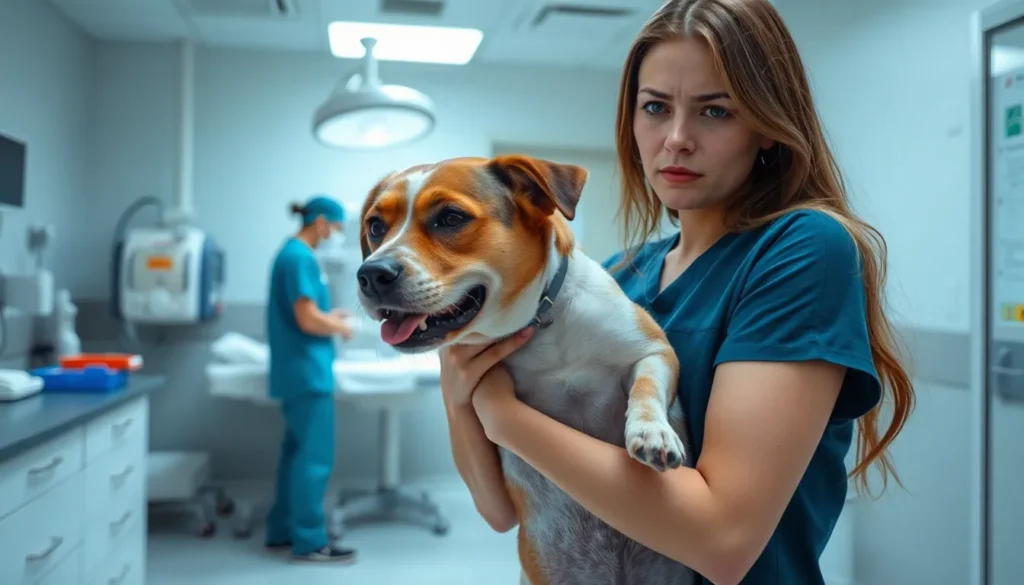Pet owners are increasingly aware of the importance of a balanced diet for their furry companions. High fiber pet food has emerged as a popular choice, offering numerous health benefits that can enhance a pet’s overall well-being. From supporting digestive health to aiding in weight management, these specialized diets are designed to meet the unique nutritional needs of pets.
Incorporating high fiber ingredients into pet food not only promotes healthy digestion but can also help control blood sugar levels and reduce the risk of obesity. As more pet owners seek to provide the best for their animals, understanding the advantages of high fiber options is essential. This article will explore the benefits of high fiber pet food and guide pet owners in making informed dietary choices for their beloved companions.
Table of Contents
ToggleWhat Is High Fiber Pet Food?
High fiber pet food contains a significant amount of dietary fiber, primarily benefiting digestion and overall health. It includes various ingredients such as fruits, vegetables, and whole grains to enhance fiber content.
High fiber foods often promote satiety, which helps control appetite and aids in weight management. These diets can assist in regulating blood sugar levels, making them suitable for pets with diabetes or those at risk.
High fiber options also support healthy bowel movements, which can help prevent constipation and other gastrointestinal issues. They might include ingredients like beet pulp, pumpkin, and oats to increase fiber intake effectively.
Incorporating high fiber pet food into a pet’s diet contributes to better health outcomes, especially for overweight or sedentary animals.
Benefits of High Fiber Pet Food

High fiber pet food offers numerous health advantages. These benefits include improved digestive health and effective weight management.
Improved Digestive Health
High fiber pet food enhances digestive health by promoting regular bowel movements. Dietary fiber increases stool bulk, reducing the risk of constipation. Ingredients such as pumpkin, peas, and beet pulp provide soluble and insoluble fibers that support gut integrity. Increased fiber intake encourages beneficial gut bacteria growth, leading to better nutrient absorption. Regular consumption of high fiber diets minimizes gastrointestinal disorders, ensuring a healthy digestive tract.
Weight Management
High fiber pet food aids in weight management by promoting satiety. Fiber-rich ingredients slow down the digestion process, helping pets feel full longer. This reduces the likelihood of overeating and encourages controlled portions. For pets with obesity concerns or diabetes, high fiber foods help regulate blood sugar levels, preventing spikes that can lead to health complications. Utilizing high fiber options can assist in reaching an ideal weight, contributing to overall well-being.
Types of High Fiber Pet Food
High fiber pet food comes in various forms, including dry and wet options. Each type has distinct benefits, catering to different pet needs.
Dry Vs. Wet Food
Dry food generally consists of kibble fortified with high fiber ingredients, offering convenience and dental benefits. Kibble’s crunchy texture helps reduce plaque buildup, promoting oral health. Wet food, on the other hand, contains higher moisture content. This can aid hydration and improve appetite in pets. Both forms can include high fiber elements like pumpkin, peas, and beet pulp, enhancing digestive health.
Natural Vs. Commercial Options
Natural high fiber pet food includes whole food ingredients, often organic, with minimal processing. This option allows for greater control over food quality and nutrient profiles. Commercial high fiber pet food options, however, often provide formulated recipes targeted for specific health issues. These pet foods display guaranteed analysis on packaging, providing clarity on fiber content. Both natural and commercial choices should prioritize high-quality, beneficial fiber sources to maximize health benefits for pets.
How to Choose the Right High Fiber Pet Food
Choosing the right high fiber pet food involves several key considerations to meet a pet’s specific health needs.
- Evaluate Fiber Content
Determine the percentage of fiber in the food. Look for options with at least 5% to 10% fiber for optimal digestive support.
- Check Ingredient List
Inspect ingredients for high-quality sources of fiber such as pumpkin, oats, brown rice, and vegetables. Prioritize foods with whole ingredients rather than fillers.
- Assess Specific Health Needs
Consider your pet’s unique health requirements. Choose formulas designed for specific conditions, such as obesity or diabetes, which benefit from high fiber content.
- Consult with a Veterinarian
Seek guidance from a veterinarian about your pet’s dietary needs. They can help select the appropriate high fiber food based on health history and activity level.
- Monitor Pet’s Response
Observe how your pet reacts to new food. Look for signs of improved digestion, energy levels, and overall health after incorporating high fiber food into their diet.
- Test Varieties
Experiment with different brands and formulations. Each pet may respond differently, so finding the right food may require trying multiple options.
- Read Reviews
Evaluate customer feedback for insights into product effectiveness. Look for reviews discussing improvements in digestion or weight management.
Making informed decisions ensures pets receive the right high fiber nutrition for their health and well-being.
Potential Risks and Considerations
High fiber pet food presents potential risks that pet owners should recognize. Introducing high fiber diets requires gradual adjustments to avoid gastrointestinal distress. Rapid changes may result in upset stomach, gas, or diarrhea. Transitioning over 7 to 10 days helps the pet’s digestive system adapt effectively.
Increased fiber intake can lead to reduced nutrient absorption. Some fibers may bind with essential nutrients, hindering their availability to the pet. Therefore, monitoring total nutrient intake remains crucial, especially for pets with specific dietary needs.
High fiber can sometimes cause dehydration. Pets consuming excessive fiber may drink less water, increasing the risk of dehydration and urinary issues. Providing fresh, clean water alongside high fiber food ensures proper hydration.
Certain high fiber ingredients may trigger allergies or sensitivities. Pets with known allergies should be introduced to new foods cautiously, examining ingredient lists for potential allergens. Symptoms such as itching or gastrointestinal issues may indicate a sensitivity.
Lastly, high fiber pet food isn’t suitable for all pets. Young, active pets may require higher protein and fat levels for optimal energy and growth. It’s essential to tailor diets based on individual pet needs, consulting with a veterinarian for the best dietary approach.
High fiber pet food offers numerous benefits that can significantly enhance a pet’s health and well-being. By incorporating these diets into their pets’ routines, owners can support better digestion and effective weight management. Choosing the right high fiber food involves understanding individual pet needs and being mindful of ingredient quality.
It’s crucial to introduce high fiber gradually to avoid gastrointestinal issues and to monitor the pet’s response to dietary changes. Consulting with a veterinarian ensures that the selected food aligns with the pet’s health requirements. With informed choices, pet owners can promote a healthier lifestyle for their furry companions, ultimately leading to happier and more active lives.








